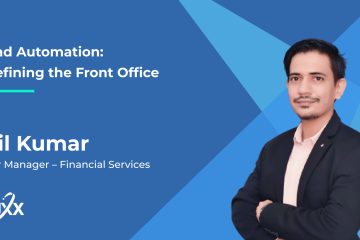Designing an app for the digital financial services platform or FinTech isn’t the most glamorous project to work on. Most UX designers wouldn’t be particularly excited about studying the complex bureaucracy of federal banking systems.

Image Source: Google
FinTech apps can feel cold, and complex and designers can be lost in a maze trying to figure out the intricacies of tax audits or learn about the minutiae of compliance standards.
It therefore wouldn’t be an exaggeration to say that FinTech app projects are challenging and a tad bit uninspiring. This however should be viewed as a challenge rather than an obstacle. While there are regulatory obligations that require FinTech apps to behave a certain way, it doesn’t mean that there are no opportunities to make the experience fuss-free and fun for users.
When it comes to designing financial apps, try to keep these interesting UI/UX design practices in mind that offer a great user experience instead of following a drab status quo model.
Effective, hassle-free onboarding and identity authentication process
Onboarding in FinTech – especially from a legal point of view – is a crucial process that helps in preventing money laundering and other financial scams. This is a key element of the FinTech app’s security measures. The onboarding process should cover customer verification, identification of the beneficiary, verification of tax residence status, and the identification of the nature of the client’s business.
Designing the app with a user-friendly interface so that customers actually feel engaged with the platform, and don’t feel that the process of giving out information is cumbersome is very important. By designing a step-by-step guide to help users reach the goal set for them, it will make it easier for users to share their information.
For ensuring that the onboarding and identity verification process is kept simple and easy, the app should be designed with detailed user guides, an explanation of why personal data needs to be shared, and fast resolution of problems (for example, user-generated errors like a photo wrongly uploaded, etc).
1.Visualization, color, and flow
Investing in vivid illustrations and graphics is vital to breathe life into a dry subject like FinTech. For instance, instead of only displaying numbers to users, you can opt to use diagrams, charts, and schemes in the financial dashboard design so that they can easily understand the data and economic indicators of their present funds. This will help your users to easily absorb the data without having to call their financial advisor or bank.
Using the right color helps to increase brand recognition by a whopping 80% and most people decide if they’re attracted to an app or product based on color alone. Spending time on a color palette for your app and getting an idea of the basic color schemes and combinations you want to work with can go a long way.
Typically, green and red hold great significance in the FinTech app space given that these two colors are loaded with universal meanings – profit and loss, buy and sell. A lot of people also tend to use blue as their brand color.
No matter what color you choose, make sure to pay attention to contrast, use positive colors to stimulate users, and don’t overwhelm users by using a lot of intense colors.
After nailing visualization and color, be mindful that the flow is kept simple and smooth, especially because financial services are complex and generally use a large amount of information. Try not to overwhelm your users with a lot of tasks, instead stick to a gradual structure.
For example, user registration can be broken into two parts. In the first part, ask for basic personal data. Based on the shared information, you can show users a draft of the services that the app is offering and if they accept, you can then move on to the second stage by asking them to provide your financial details to make a transaction.
2.Copy and microcopy
Copy and microcopy cover all the text found in the application. The text within the FinTech app should be understandable by everyone, regardless of their financial education and expertise. Since finance is already a complex field, your FinTech app should be designed with easy-to-understand language that is devoid of jargon and technical terms. Even if you do find some hard terms like LTV calculator or overdraft, find ways to explain these terms to users without overloading the app with a lot of text. Remember to keep the tone conversational.
3.Device adaptation and display of content
Adaptability is an important feature when it comes to designing FinTech apps. All data and information that users expect to receive should comfortably fit into any screen, ensuring a great user experience for any display size.
Another distinctive feature is being able to display a massive amount of data such as statistics, reports, investment reports, and so on in large tables. These reports and sheets should ideally be designed in a way that doesn’t overwhelm users and displayed on a screen for customers to easily navigate and make sense of it all. They should be readable, scalable, and logically built.
4.Gamification
Even though your app belongs to the financial industry, which has the reputation of being strict and serious, it doesn’t mean you can’t inject a bit of fun into the UX! Gamification in FinTech can help you lower the entry barrier to financial apps and make the app interesting and fun for your users. Gamification elements will help users to enjoy transactions and also enhance their user experience.
Take GooglePay or GPay, for example, the app comes up with fun games during holidays to encourage users to do more transactions on the platform.
5.Predictions based on user behavior
There’s a huge buzz in the FinTech industry regarding the usage of complex algorithms and machine learning to get to know users better and offer them predictions based on their behavior. Forecasting is achieved in various ways that give users a feeling that they’re dealing with personalized products which are crafted to suit their unique needs. Machine learning even helps in evaluating massive amounts of data in real-time and giving users instant updates.
Conclusion
We’ve covered a handy list of UI/UX practices that you should not miss if you’re designing a FinTech app. Employing these practices will help you deliver an app that not only has an intuitive UI but is also successful in making users feel that the app they’re using will manage their money and all finance-related queries.
About the Author-
Sushree is the Marketing Manager of Divami Design Labs, one of the most reputed UX UI Design Firms. In her stint there, she picked up a lot of tricks when it comes to the design & development of any app and loves to share her point of view on them. You can connect with her through her LinkedIn profile here.


